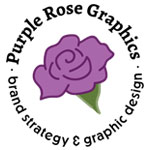Last Month, I told you all about the most common file formats. Well this month, I’m back with 3 more file formats you need to know about! These are common in the printing and design fields. So let’s cut through some confusion with the second half of the brief glossary of common file types!
PNG: PNG stands for “Portable Network Graphics”. PNG files were created as an improved version of a GIF. This means it is also a lossless compression file that can compress files with out losing information or image quality. PNG files can not be separated by color by a commercial printing companies’ in-house staff. Separations are necessary for commercial printing and because PNG doesn’t support this, it is not the best choice for printing. works great on the web. PNG files can save a document into two different color modes, 8-bit and 24-bit. PNG also supports transparent backgrounds. PNG files can also be used for simple animations, but animated GIF files are still more popular.
USE FOR: Websites digital marketing materials that won’t be commercially printed, and any time you need a clear background for online or digital only projects.
TIF or TIFF: According to Wikipedia, TIF or “Tagged Image Files” were created in the mid 1980s by a company named Aldus. Aldus wanted desktop scanner companies to use it as a universal file format. Aldus was purchased by Adobe Systems in 1992 and the TIF files haven’t seen a major public update since then. TIF files are great for both saving and sharing digital images as well as printing, and use on websites. They support a clear background. What makes this a great file type is that it supports both lossless and lossy file compression. USE FOR: Printing, websites, and images with clear backgrounds
EPS: EPS or “Encapsulated Post Script” is a way to compress and send files by email. While still viable, it’s not a commonly used way to send files due to enhancements in PDFs. Mostly used by graphic designers and commercial printers, this file type is readable by Adobe Illustrator and can provide the editable files for a vector based project.
USE FOR: Any vector based project that needs to be emailed
Again, there are still a lot more file types than just the ones I mentioned here and on the previous post. Now, however, you’ll be a lot more educated for questions such as whether you’d like to have an EPS file or if a PNG will do.
